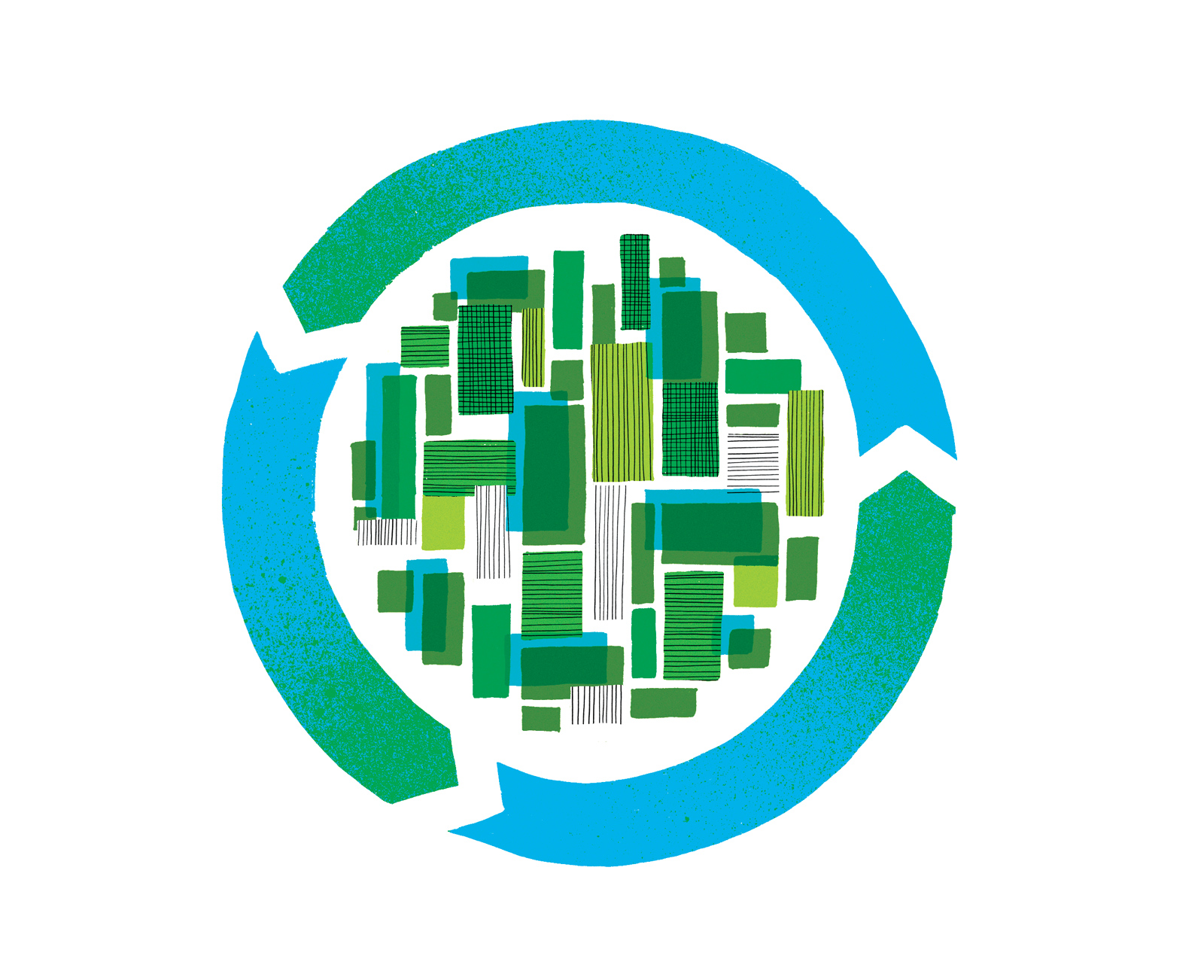Cities as ecosystems

Since the yellow smog that crept through the stories of Sherlock Holmes and Charles Dickens, cities have been painted as pollution-filled hovels of crime and social isolation. Today, where our cities occupy only two per cent of the Earth’s land surface, city dwellers are said to consume around 75 per cent of the world’s resources and are to blame for 80 per cent of global greenhouse gases. For former UN Habitat Executive Director, Anna Tibaijuka, “it is no coincidence that global climate change has become a leading international development issue at the same time as the world has become urbanized. The way we plan, manage, operate and consume energy in our cities is the key driver behind the phenomenon of global warming.”
But urbanisation doesn’t have to be a problem in itself. In fact, city dwellers can have much lower carbon footprints per capita than our rural counterparts thanks to the perks of higher density – proximity to services, public transport hubs and decreased heating and cooling usage per dwelling. Where until recently, cities have been considered inherently unsustainable, they are now a key focus in our search for solutions to the challenges posed by climate change, peak oil and other resource scarcities. For clues as to what these solutions may look like, many are turning to ecosystems to understand how good urban design coupled with good governance could make our cities sustainable and resilient homes for the world’s booming population.
In their book Resilience Thinking, Brian Walker and David Salt describe ecosystem resilience as the capacity for a system to “absorb disturbance and reorganise while undergoing change, so as to still retain essentially the same function, structure, identity and feedbacks”. Models of ecosystem resilience are now being examined for relevance and application to human settlements, along with human psychological and physical health. In the context of communities and settlements, resilience can refer to an ability to adapt and recover quickly from any disturbances or changes in resource supply. Walker and Salt describe three key features that contribute to the resilience of a system: diversity, modularity and tightness of feedbacks.
Diversity creates greater flexibility and increased potential responses to challenges – the more variations available to respond to a shock, the greater the ability to absorb the shock. Resilience in nature is enabled through the availability of a variety options to fall back on in times of disturbance – the gist being, don’t put all your eggs in one basket (or two supermarkets). Activist and author Chip Ward describes the value of diversity well in this blog post. For humans, diversity can include a variety of food and energy sources, economic industries, cultures and skills within the community, land use, transport options and institutions. Cities such as Berlin or Bangkok are home to a rich diversity of people, cultures, existing groups, and resources, particularly in comparison to their rural counterparts. All these offer incredible opportunities for innovation, research, cross-cultural exchanges, global networking and social change. It’s worth noting though, that where socio-cultural diversity may emerge naturally in our cities, diversity in transport infrastructure, energy and food sources requires planning and governance to put in place.
Modularity refers to the relationships between the independent parts of a system. Ecosystems, for example, can consist of distinct niches or habitats, like a pond or woodland, and while these subsystems may interact with each other, they are also largely self-reliant and self-regulating. Each niche has the capacity to continue functioning if another one fails. This allows the system as a whole the opportunity to reorganise itself, and enhances its capacity to absorb shocks. In our communities, developing resilience may mean supporting each ‘module’ – or each town, or city, or neighbourhoods within cities – to strengthen its own local economic base and provide as much of its own basic necessities as possible. According to Rob Hopkins, initiator of the Transition Towns concept (which has inspired a global localisation movement), “local food systems, local investment models, all add to modularity, meaning that we engage with the wider world but from an ethic of networking and information sharing rather than of mutual dependence”. To date, there are over 975 Transition Initiatives around the world. This includes urban initiatives such as London’s Transition Brixton, Melbourne’s Transition Darebin, and Transition Sydney. Building self-reliance into our cities, at the elemental and systemic level increases their resilience to any external and internal shifts.
Tightness of feedbacks points to the speed and strength at which any change in one part of a system will be felt and responded to in other parts. The longer the feedback loops, the slower the system recognises, responds to and adapts to difficult situations. Enhancing resilience requires shortening our feedback loops to be able to pre-empt & avoid, or respond to, disruptions to supply. In light of this, communities are attempting to take the provision of basic necessities, such as food and energy, into their own (or at least more local) hands, enabling quicker feedback for preempting or avoiding disruptions to supply chains and at the same time increasing modularity. And just as ecosystems cannot externalise their problems, nor should resilient urban systems. Tightening feedback and shortening systems of supply will also mean greater visibility and accountability of production methods, along with the waste, pollution and the other environmental and social side effects of our lifestyles. As Michael Shuman, author of Going Local, argues, “a guaranteed way to ensure that a car does not pollute is to stick the exhaust pipe into the passenger section. Similarly, a community committed to self-reliance will be mindful not to foul its own nest.”
Essentially, resilience thinking is systems thinking – that is, a lens for understanding how connected and dependent we are on each other and the health of the ecosystems around us for all our basic necessities. Urban communities the world over are recognising that by enhancing the resilience of our cities, we can at once limit our impacts on these ecosystems, and increase our capacity to wear the environmental challenges that lie ahead.
Illustration for Assemble Papers by Marc Martin

